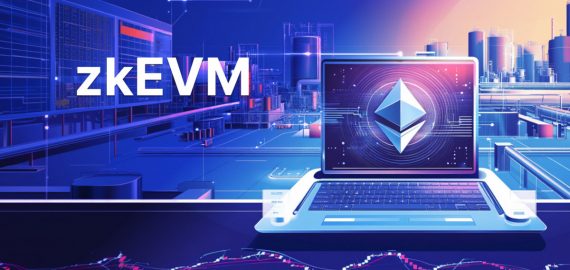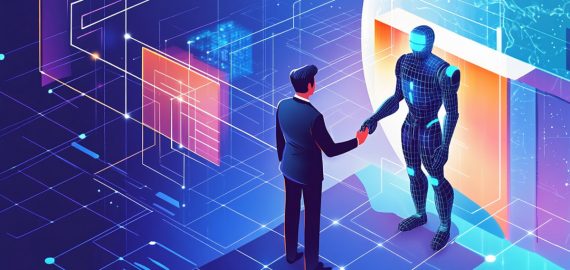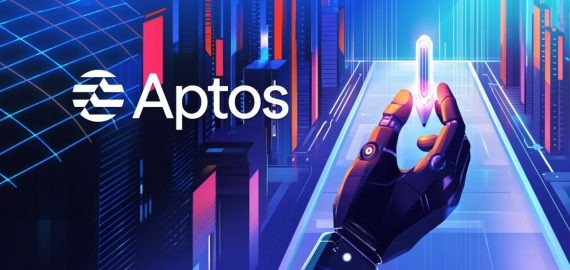How Vibe Coders Are Winning The AI Race With GPT-5


In Brief
Vibe coding is a new approach where creators use intuition and AI tools to build innovative projects quickly, focusing on results and creativity rather than technical expertise or traditional coding methods.

A new kind of coding is on the rise, and it’s not what you learned in class if you took computer science. People are building tools, workflows, even entire businesses by shaping AI responses with the right vibes. They’re mixing prompts, models, visuals, and logic, trusting feel and outcome more than syntax or structure. That’s vibe coding, and the recent launch of GPT-5 just supercharged it.
What Is Vibe Coding?
It’s the creative act of getting the result you want from an AI, even if you don’t always know how it works under the hood. Instead of thinking like an engineer, you think like a director. You try to guide the AI toward your vision, using intuition, iteration, and feedback. It’s messy, playful, and surprisingly effective.
Vibe coding sits at the intersection of prompting, prototyping, and producing. You might use GPT-5 [c]to generate code snippets, Midjourney to design a brand kit, and Zapier to glue it all together. What matters is how well you orchestrate the tools.
This way of working is creating an entirely new layer of the economy. One that’s open to millions of people who don’t consider themselves technical, but know how to vibe something into existence.
Coders Become Curators
For decades, what mattered in software development was knowing the exact rules of the languages and hardware that you were working with. You had to learn a language, follow strict syntax, and debug your way to something that worked. That world still exists, but it’s no longer the only way to build.
AI changed things dramatically. Now, you can create a functional app, a viral brand, or a personalized tool without knowing how to write a line of code. You just need to know what to ask, how to tweak the output, and when to stop refining. The skill is in curating results, where it used to be in writing the actual codes.
Vibe coders don’t think like engineers, but more like editors. They know how to see what’s close enough, what just needs a little push, and what’s worth throwing out entirely. They move fast, remix ideas, and often build things that look more like art than software.
It’s not that technical skill isn’t important anymore, but more that creative intuition is finally catching up. And for the first time, people who never thought of themselves as “builders” are building things that work.
The Rise of AI-First Products
A few years ago, “AI-powered” was just a word that was slapped onto things to make them cool. But now it’s the actual blueprint. Founders are starting products from AI, instead of trying to add it to them. The AI is the product. Look around:
- Solo founders are shipping GPT-powered SaaS tools in a weekend;
- AI-generated characters are building massive audiences on Instagram and TikTok;
- Entire agencies are being replaced by one person armed with Claude, Midjourney, and a Notion template.
Speed, cost, and surface area are what has changed. With foundation models doing the heavy lifting, anyone can launch something that feels custom, smart, and responsive, without a dev team or seed round. You don’t need to write the code yourself; you just need a sharp idea and the ability to shape AI output into something people want. And because the barrier to entry is so low, we’re seeing an explosion of hyper-niche tools.
These tools often go further than MVPs. Because building has become so easy, they are now fully functional products right from launch. Oftentimes with real revenue, sometimes within days of launching. The big shift is that we’ve stopped asking “can AI do this?” and started asking “what can I layer on top of AI that makes it useful, fun, or personal?”
Vibe Coders vs. Traditional Builders
Traditional builders plan. They architect systems, write specs. Vibe coders just dive in. They build what feels right, fast. If it works, they ship. If it doesn’t, they try again. It’s not necessarily “move fast and break things”, but more like “move fast and feel things.”
Vibe coders:
- Prototype in hours, not weeks;
- Don’t care if the stack is “correct.” They only care if it works;
- Rely on AI as a partner. For code, copy, design, even product ideas;
- Momentum matters more than polish.
And they’re winning. In a world where timing is everything and attention spans are short, vibe coders can beat companies with 100x more funding, because they’re closer to the edge. They feel what people want before people know they want it.
This doesn’t mean traditional builders are obsolete. They’re still needed for scale, durability, and infrastructure. But for the first time, someone who knows how to prompt better than they code can outbuild someone with 10 years of engineering experience.
The New AI Economy
Vibe coding is changing the entire economy. In the old world, economic leverage came from capital, labor, or distribution. In the new world, it comes from creativity and compute. If you can vibe, you can build, and if you can build, you can earn. Here’s how that plays out:
- Microstartups: Solo founders spinning up real businesses in days. One-person SaaS products, AI-powered tools, browser extensions, prompt marketplaces, whatever works;
- AI-driven agencies: Designers, writers, and marketers turning AI into force multipliers. A team of three can now do what once took 30. And they’re doing it for brands, agencies, and themselves;
- Automation-as-a-service: Builders selling time savings. Whether it’s internal tools, AI agents, or integrations between existing platforms, if you can save someone 10 hours a week, you can charge for it.
This new economy is fast, chaotic, and fun. It’s about building something cool, useful, and alive. And it’s powered by people who don’t wait for permission. The AI economy is truly here. Even Bill Gates agrees.
What You Can Do With Vibe Coding
You don’t need to be a genius engineer to tap into the AI economy. All you need is curiosity, a laptop, and a willingness to ship stuff that might not be perfect. Here’s what that looks like in practice:
- Learn how to talk to models. Prompting is the new programming. If you can tell an AI what you want in clear, structured language, you can build almost anything;
- Start small. Automate one boring task. Build one tiny tool. Publish one experiment. The vibe economy rewards momentum;
- Share your work. A good post on X or LinkedIn can attract users, customers, or collaborators. Distribution is half the game;
- Don’t overthink it. You’re not building a startup for a VC pitch. You’re testing a tool in public. It can be ugly. Just ship.
Most people are still waiting. Waiting for the perfect idea. Waiting to learn how to code. Waiting for someone to explain what AI means for their industry. But the people who aren’t waiting, the ones building weird little apps, bots, newsletters, tools, are already getting paid. You can too.
Why Vibe Coding Matters
The shift toward vibe coding is just beginning. Tools are exploding, workflows are shifting, and the economy around AI is starting to resemble the early internet. That means chaotic, wide open, and full of weird genius.
For all the hype, most people still don’t know how to actually use these tools well. That’s your edge. You don’t need to build a model, raise millions, or join an AGI lab. The opportunity is right in front of you: turn ideas into products faster, prototype experiments, remix data, automate the boring stuff, and bring your own taste to the table.
And the craziest part: we’re still pre-GPT-5, pre-agentic AI, pre-mainstream for 90% of the world. If this feels like the early days of a new internet, that’s because it is. So keep learning, keep playing, and keep building.
Disclaimer
In line with the Trust Project guidelines, please note that the information provided on this page is not intended to be and should not be interpreted as legal, tax, investment, financial, or any other form of advice. It is important to only invest what you can afford to lose and to seek independent financial advice if you have any doubts. For further information, we suggest referring to the terms and conditions as well as the help and support pages provided by the issuer or advertiser. MetaversePost is committed to accurate, unbiased reporting, but market conditions are subject to change without notice.
About The Author
Alisa, a dedicated journalist at the MPost, specializes in cryptocurrency, zero-knowledge proofs, investments, and the expansive realm of Web3. With a keen eye for emerging trends and technologies, she delivers comprehensive coverage to inform and engage readers in the ever-evolving landscape of digital finance.
More articles

Alisa, a dedicated journalist at the MPost, specializes in cryptocurrency, zero-knowledge proofs, investments, and the expansive realm of Web3. With a keen eye for emerging trends and technologies, she delivers comprehensive coverage to inform and engage readers in the ever-evolving landscape of digital finance.


















































